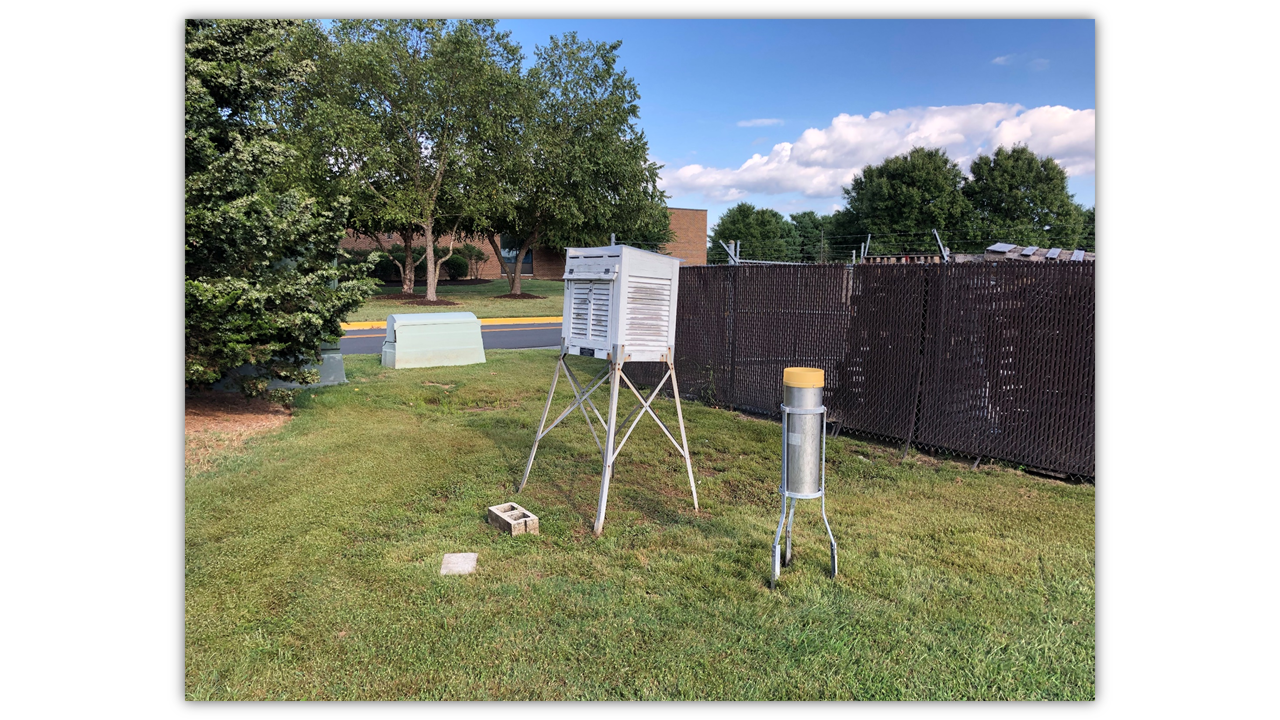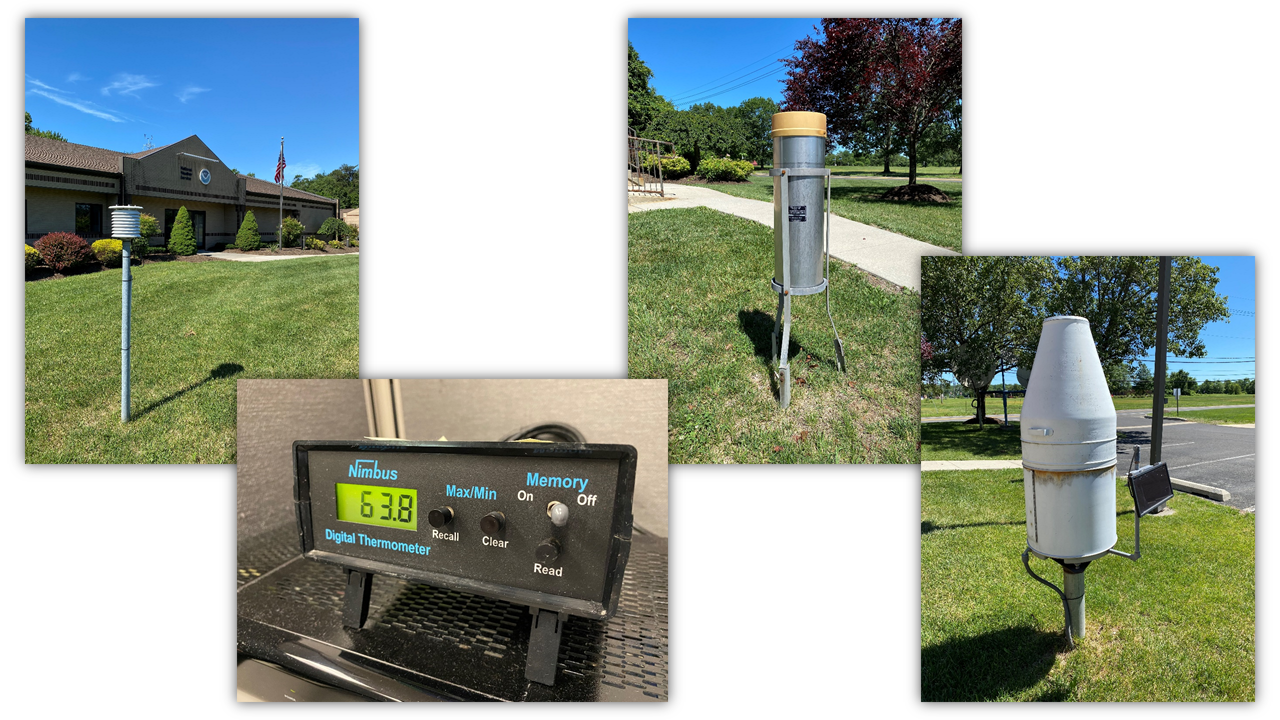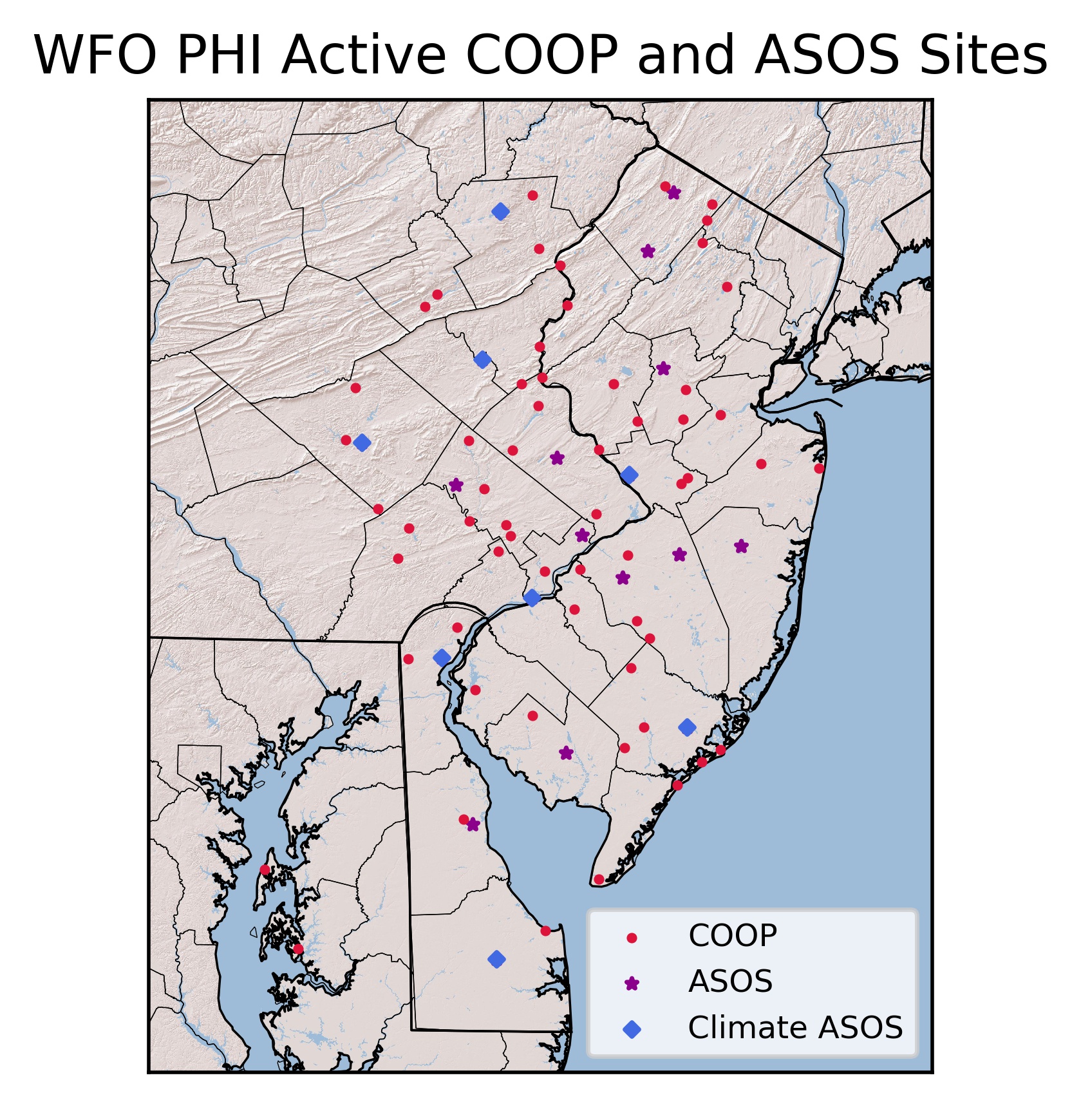The National Weather Service (NWS) Cooperative Observer Program (COOP) is an extensive network comprised of thousands of volunteer weather observers nation wide that provide daily weather data. Our nation's Cooperative Weather Observers are citizens throughout the country from almost every walk of life that have a genuine interest in observing and reporting the ever changing weather.
All sites are equipped with precipitation measuring equipment, including a rain gauge and snow boards for measuring snowfall and snow depth, and many are equipped with a maximum/minimum temperature sensor. Some also record or report additional information such as soil temperature, evaporation and wind movement, agricultural data, water equivalent of snow on the ground, river stages, lake levels, atmospheric phenomena, and road hazards. Many Cooperative Stations in the United States have been collecting weather data from the same location for over 100 years.

A typical cotton region shelter station (CRS) with an 8" standard rain gauge located in Dover, DE.
Equipment to gather this data is provided and maintained by the National Weather Service. Data forms are sent monthly to the National Center for Environmental Information (NCEI) in Asheville, North Carolina. The data is digitized, quality controlled, and subsequently archived. Volunteer weather observers regularly and conscientiously contribute their time so that their observations can provide vital information needed.
This data is invaluable in learning more about floods, droughts, heat waves, and cold waves, which inevitably affect everyone. They are used in agricultural planning and assessments, engineering, environmental-impact assessments, utilities planning, and litigation. The data plays a critical role in efforts to recognize and evaluate the extent of human impacts on climate from local and global scales.

Typical COOP equipment located at the NWS Office in Mount Holly, NJ.
Currently, NWS Mount Holly has over 60 active cooperative stations which span across most of New Jersey, Delaware, eastern Maryland and eastern Pennsylvania, some of which have been active for many decades and carry very robust climatological databases. These greatly supplement our Automated Surface Observing System (ASOS) locations which are also used for climate purposes. We always welcome interested and committed individuals and/or organizations to join our network. We are particularly looking for new observers in the Delmarva region, New Jersey Pine Barrens, and coastal locations.

Map of active COOP and ASOS locations across our service area as of May 2020.
Click here to view the local COOP Observer Manual
Click here to view a short video on measuring rainfall with a Standard 8" Rain Gauge
Click here to view a precipitation, snowfall, and snow depth measuring video guide
Click here to view a precipitation measuring video guide (en español)
Click here for more information about the national COOP Program
Click here to view the seasonal National Cooperative Observer Newsletter
For questions, additional information about our local COOP program, or inquiries about becoming an observer for our office, please contact the COOP Team (phi.coop@noaa.gov).